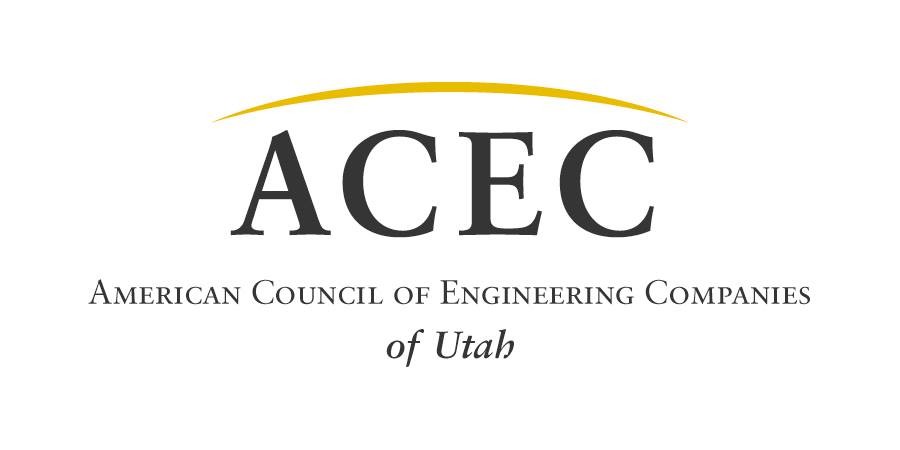Engineering Utah’s Future: Collaboration, Technology, and Leadership
Utah’s infrastructure serves as the foundation of its growing economy, vibrant communities, and exceptional quality of life. From water systems to urban transportation networks, ensuring resilience and innovation in the state’s built environment is at the forefront of the engineering profession. As leaders in this critical field, ACEC Utah and its member firms continue to advocate for practices that strengthen our industry and elevate Utah’s future. Today, we explore three areas that are redefining Utah’s engineering landscape: interdisciplinary collaboration, the influence of technology, and the essential role of human resources in engineering management.
The Power of Collaboration
In today’s interconnected world, no single discipline holds all the answers to complex infrastructure challenges. Whether designing sustainable transportation corridors or addressing escalating water resource concerns, success is rooted in interdisciplinary collaboration. The engineering industry’s ability to bridge gaps between traditional silos—such as integrating civil, structural, and environmental engineering expertise—drives groundbreaking innovation while meeting increasingly stringent demands for efficiency, sustainability, and safety.
ACEC Utah has long been an advocate for fostering collaboration across disciplines and organizations. By connecting member firms and encouraging active communication, we aim to cultivate a culture where engineers of diverse specializations work hand-in-hand with policymakers, architects, and contractors. This cohesive approach strengthens project outcomes while ensuring resource optimization. In Utah, the results of this collaborative spirit are evident everywhere: in revitalized urban infrastructure, sustainable development projects, and innovative solutions for rural and natural resource systems.
As Utah’s population continues to grow and its infrastructure needs evolve, interdisciplinary collaboration will remain indispensable. For our partners across engineering firms, municipalities, and state agencies, the challenge is clear: maintain open dialogue, share expertise freely, and recognize that the collective strength of our profession is greater than the sum of its individual parts.
Technology: Innovation at the Core
The engineering profession has always been one of progress, but few eras can match the rapid change brought about by today’s technological advancements. Tools such as artificial intelligence (AI), building information modeling (BIM), and digital twins are transforming the way engineering firms design, communicate, and deliver projects. These technologies empower professionals with the ability to predict project outcomes more effectively, optimize resource use, and create solutions that adapt over time—all while improving safety and reducing costs.
In Utah, technology is at the core of many recent breakthroughs, such as advanced water management systems, smart transportation networks, and data-centric urban planning processes. ACEC Utah promotes the continued integration of emerging technologies into member firms’ operations, not simply as a means to remain competitive, but also as a way to enrich the infrastructure that supports our communities.
At the same time, embracing technology requires both strategic investments and a commitment to education. Member firms must ensure their employees receive the training necessary to fully leverage new tools, while organizational leaders must adopt forward-thinking policies that address the ethical and practical challenges associated with these advancements. ACEC Utah remains committed to serving as a bridge between innovation and application, ensuring firms have access to the education, resources, and partnerships they need to thrive in this dynamic environment.
The Crucial Role of Human Resources
Engineering firms are powered by people. Behind the technologies and designs that transform communities are teams of skilled professionals whose creativity, technical expertise, and problem-solving abilities make an impact every day. As engineering firms face increasing demands for innovation and efficiency, effective human resource management has become essential to sustainable success.
Today, challenges such as talent recruitment, workforce diversity, and employee retention require organizations to rethink how they manage and develop their teams. At ACEC Utah, we recognize that investing in human capital directly contributes to the success of Utah’s infrastructure goals. We support our members in creating inclusive workplaces where engineers can collaborate, innovate, and build long-term careers.
Increasingly, successful firms are emphasizing professional development programs, mentorship initiatives, and workplace cultures that prioritize collaboration and adaptability. These strategies ensure member firms are well-positioned to address Utah’s growing infrastructure needs while preparing for future challenges. ACEC Utah highlights these efforts as part of our ongoing advocacy for workforce development, demonstrating that Utah’s engineering professionals are truly at the heart of our state’s prosperity.
Moving Forward Together
Utah’s future success relies on the engineering industry’s ability to adapt, innovate, and lead with conviction. By fostering interdisciplinary collaboration, embracing technological advancements, and investing in human capital, ACEC Utah and its member firms are building stronger communities that will endure for generations to come.
We invite all stakeholders—engineering firms, policymakers, educators, and community leaders—to join us in shaping the future of Utah’s infrastructure. Together, we have the knowledge, tools, and talent to address challenges and deliver solutions that will benefit every corner of our state. The road ahead is promising, and ACEC Utah is firmly committed to leading Utah forward.






